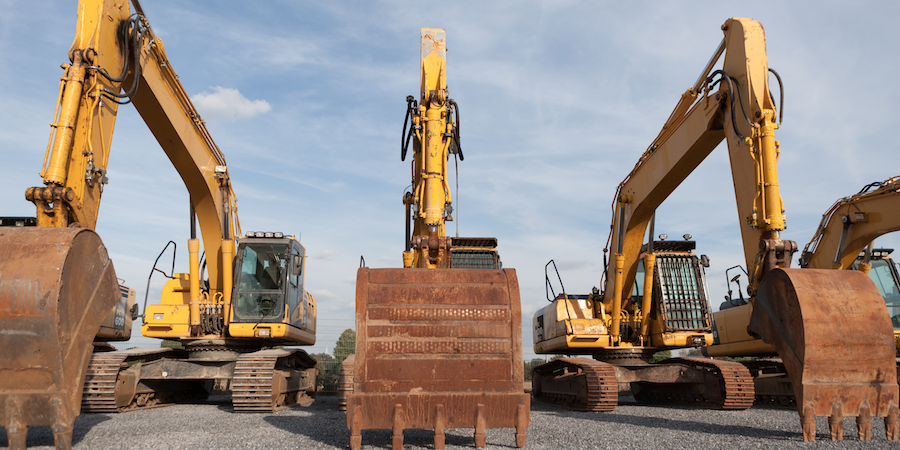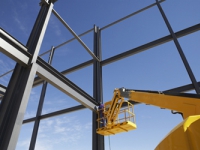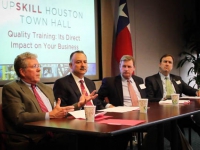It has been almost five months since I made the jump from being a craftsman to an operations technician. I must say: I enjoy it. I still get to troubleshoot problems within my unit and work with a wide variety of maintenance personnel. I get to work with hand tools, PPE (personal protective equipment), and I get to deal with all types of inclement weather.The past few months have been a strict focus on learning my process, EHS (Environmental Health and Safety), and learning the unit in which I am working. Although every company has different training techniques, I was impressed with how much emphasis is put on safety. I have heard of companies and foremen who just talk safety, but here we practice what we preach. If a job cannot be done safely, then it is time to step back and rethink the job.
Reshaping the Construction Industry
The following was originally published on the NCCER blog Breaking Ground. Reprinted with permission.There’s no better time to work in the construction industry than now. With a growing skilled workforce shortage, salaries remain high and career opportunities are plentiful. Earlier this year, NCCER released its annual Construction Craft Salary Survey, which lists the average annual salaries of craft professionals from industrial and commercial construction firms across the country.For as high as these salaries are, the reality is that what skilled craft professionals earn is typically far greater. The salaries listed in NCCER’s survey are average base salaries, not including overtime, per diem, bonuses or other incentives.
June 15, 2016
The issue of worker misclassification promises to loom large once again during the next session of the Texas Legislature – and not just as it relates to the construction industry.Misclassification, as Construction Citizen readers know all too well, is when businesses pretend their labor is being done on a subcontracting basis when by law the people doing the work should be compensated as employees.There are, of course, many legitimate uses of contract labor but the problem arises when some companies abuse the subcontractor designation specifically to avoid payroll taxes, workers’ compensation insurance, and other benefits that have traditionally been part of an employer-employee relationship. In construction, businesses that misclassify their workers can often underbid their competitors by as much as roughly 30 percent.During a hearing of the Texas House Business and Industry Committee this past week, lawmakers appeared divided on whether ride sharing companies like Uber and Lyft should be able to designate their drivers as independent subcontractors or employees.
June 14, 2016
Employment falls in April, May but April openings rise; various materials prices increaseEditor’s note: Construction Citizen is proud to partner with AGC America to bring you AGC Chief Economist Ken Simonson's Data DIGest. Check back each week to get Ken's expert analysis of what's happening in our industry.Nonfarm payroll employment in May increased by 38,000, seasonally adjusted, from March and by 2,398,000 (1.7%) over 12 months, the Bureau of Labor Statistics (BLS) reported on Friday. The unemployment rate declined to 4.7% from 5.0% in April. Construction employment dropped by 15,000 for the month (to 6,645,000) but increased by 219,000 (3.4%) year-over-year (y/y). The estimated change for April was revised from +5,000 to -1,000. Residential construction employment (residential building and specialty trade contractors) decreased by 4,400 for the month but rose by 127,700 (5.2%) y/y. Nonresidential employment (nonresidential building, specialty trades, and heavy and civil engineering construction) shrank by 10,300 for the month but increased by 91,400 (2.3%) y/y.
June 13, 2016
It was noted just the other day in The Guardian that in London, home to many major multinationals and a key player in the European Union, there are 436 planned buildings that will be over 20 stories tall. Eighty-nine are currently under construction and the 233 approved proposed buildings in the pipeline have more than doubled in the last year.In the overall London approval process that is similarly economically driven like Houston, but still at least 10 times tougher, only 3 buildings have been denied approval for construction. There are on-going debates about the clustering of the towers, sight lines to St. Paul’s Cathedral, shadow patterns on nearby buildings, and wind tunnels created by the buildings. However, once a building has been approved, its development is dependent on the financing of the scheme.
June 10, 2016
Business leaders in Houston seem well-positioned to set the tone for how the rest of the nation addresses workforce challenges, experts agree. During a town hall-style event hosted by the Greater Houston Partnership this past week, health care leaders, construction executives and others discussed ways the private sector is taking the lead to ensure that a quality workforce can be cultivated and sustained for decades to come.“Industry is truly leading the initiative,” said Peter Beard, Senior Vice President of Regional Workforce Development at the GHP. He opened a panel discussion by giving specific praise to the construction and petrochemical sectors and said there is a belief that “we share, fundamentally, a workforce.” That’s why addressing the needs of employers and employees will “take a collective effort,” Beard said.
June 09, 2016
Now with 123 Accredited Employers, 47 Project Participants, four Certified Staffing Agencies, seven active projects (as well as three completed projects and more in the pipe) and eight owners who specify C3 participation in their contracts, Construction Career Collaborative is in a hiring mode. If you know of someone who has a passion for people and the well being of the commercial construction industry, please share the job description below with them.C3 Seeks to Fill Key PositionConstruction Career Collaborative (C3), an alliance of owners, contractors and specialty contractors whose purpose is to positively affect the issues facing the craft worker in the commercial construction industry, is seeking an energetic, talented individual with a passion for people.
June 08, 2016
The following article originally appeared in the June newsletter to clients of Kiley Advisors, LLC for the purpose of providing the latest leading indicators and industry issues to those clients. Reprinted with permission.When it comes to oil, $50 is not enough. Those were the sentiments of Jesse Thompson, Business Economist for the Federal Reserve Bank of Dallas, Houston Branch. Complimenting that opinion, Dr. Bill Gilmer, Director of the UH Bauer Institute for Regional Forecasting, earlier this month during his bi-annual symposium, noted that a non-volatile $60 price for oil would result in increased activity. The chart above shows the breakeven price, further supporting their claims.
June 08, 2016
The following article was written by Whitney Martin and was originally published on Marekbros.com.Did you know that the USS Lexington, built in 1942, participated in nearly every major operation during WWII AND was BUILT BY WOMEN? Yes, you read that correctly, this 42,000 ton, 910 foot war machine was constructed by women.Women have played major roles in construction for decades. During WWII and the Korean conflict, women had to take the jobs that the men couldn’t take since they were on the front lines. Not only did women build the war machines, they ferried the men to Europe and the Pacific theaters. Many women lost their lives during the wars while doing so. Their model was “Rosie the Riveter” who symbolized the women who played major roles as riveters, sheet metal workers, and steelworkers. They built tanks for the front, built locomotives for the home front and flew major missions around the world.
June 07, 2016
Hi there. The Chamberlin Man here.Afraid of heights? Don't look at these photos!A 12,000 square foot barrel shaped standing-seam aluminum roof constructed of 40-foot custom-made sheet metal panels isn’t the average roofing project. Of course, it proved to be no problem for Chamberlin Roofing and Waterproofing in Austin.The 320-home residential high-rise is called SkyHouse Austin for a reason. Twenty-four stories tall, construction on the tower roof required innovative safety measures and a brave crew to manage the steep grade created by its barrel design.Despite the challenges intrinsic to the design, Chamberlin delivered “our usual;” that is, outstanding workmanship. In this case, the standing seam materials were custom fabricated in Chamberlin’s Austin sheet metal shop. A five-man crew then installed the sheets by meticulously walking them into place, one by one.
June 06, 2016



.jpeg?itok=6uFZXEBH)





.jpeg?itok=4Vi_1nJG)


































